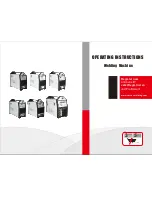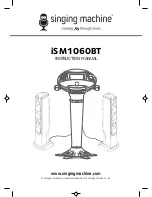
EN
| 49
Bosch Security Systems | 02 April 2004
LTC 8850 |
Instruction Manual
|
Allegiant Server
ACTS Audio Control Field
The ACTS (Allegiant Coaxial Transmission System)
Audio Control field column lets you select which
system keyboard controls ACTS audio functions. The
Radio Buttons
allow only one keyboard to be
selected.
Figure 87 Keyboard Configuration Table
3.2.6.9 Parameter Table
Parameter COMM Port Table
This table sets the communication parameters for the
I/O ports of the Allegiant system.
Figure 88 Parameter Configuration Table
COM Ports
•
Console
– The Allegiant’s Console port is used for
communicating with a PC or other computing
device using the Allegiant Server or the Console
Command Language.
•
Printer –
The Allegiant Printer port is used to
send data to a logging printer or other device. The
port parameters must be adjusted to match those of
the connected device.
•
Alarm
– This section applies only to Allegiant
systems that have an external alarm RS-232 port.
The Allegiant Alarm port is used to communicate
with Allegiant alarm interface units. The Alarm
port parameters must match those of the connected
alarm interface unit.
• COM
1/COM 2
– These sections are available
only with Allegiant systems that have a COM 1
and/or COM 2 port and are used for
communicating to certain Allegiant accessory
devices. The parameters for these ports should not
normally be changed.
•
Keyboard
– These selections control the keyboard
port parameters and should not normally be
changed.
Settings
•
Baud Rate
– The baud rate entries control the
Allegiant serial ports’ data transfer speeds. In a
noisy environment, a slower baud rate may
improve communications. It is recommended that
the fastest reliable baud rate be used. The baud-rate
of the Allegiant must match the device that will be
connected to the associated port.
•
Stop Bits
– One or two stop bits may be selected.
The stop bit selection of the Allegiant must match
that of the device that will be connected to the
associated port. When communicating with the
Console, always use one stop bit Otherwise, the
transfers of configuration programming, Downloads
and Uploads, will not work correctly.
•
Data Bits
– Seven or eight data bits may be
selected. The data bit selection must match that of
the device that will be connected to the associated
port. When communicating with the Console,
always use eight data bits. Otherwise, the transfers
of configuration programming, Downloads and
Uploads, will not work correctly.
•
Parity
– When Even or Odd parity is selected, data
error checking is performed on each data byte
received. When
None
is selected, error checking is
not performed on individual data bytes. The parity
selection of the Allegiant must match that of the
device that will be connected to the Console port.
•
Handshake
– If hardware handshaking is enabled
by checking the box, the Allegiant will check the
RS-232 port’s CTS signal before transmitting data
over the serial port. Data will not be transmitted
until CTS is active. If the box is not selected, CTS
has no effect on data transmission. The port will
control the RTS signal regardless of the handshake
setting. It is up to the device connected to the
Allegiant’s port to decide whether or not to check
this signal.
















































